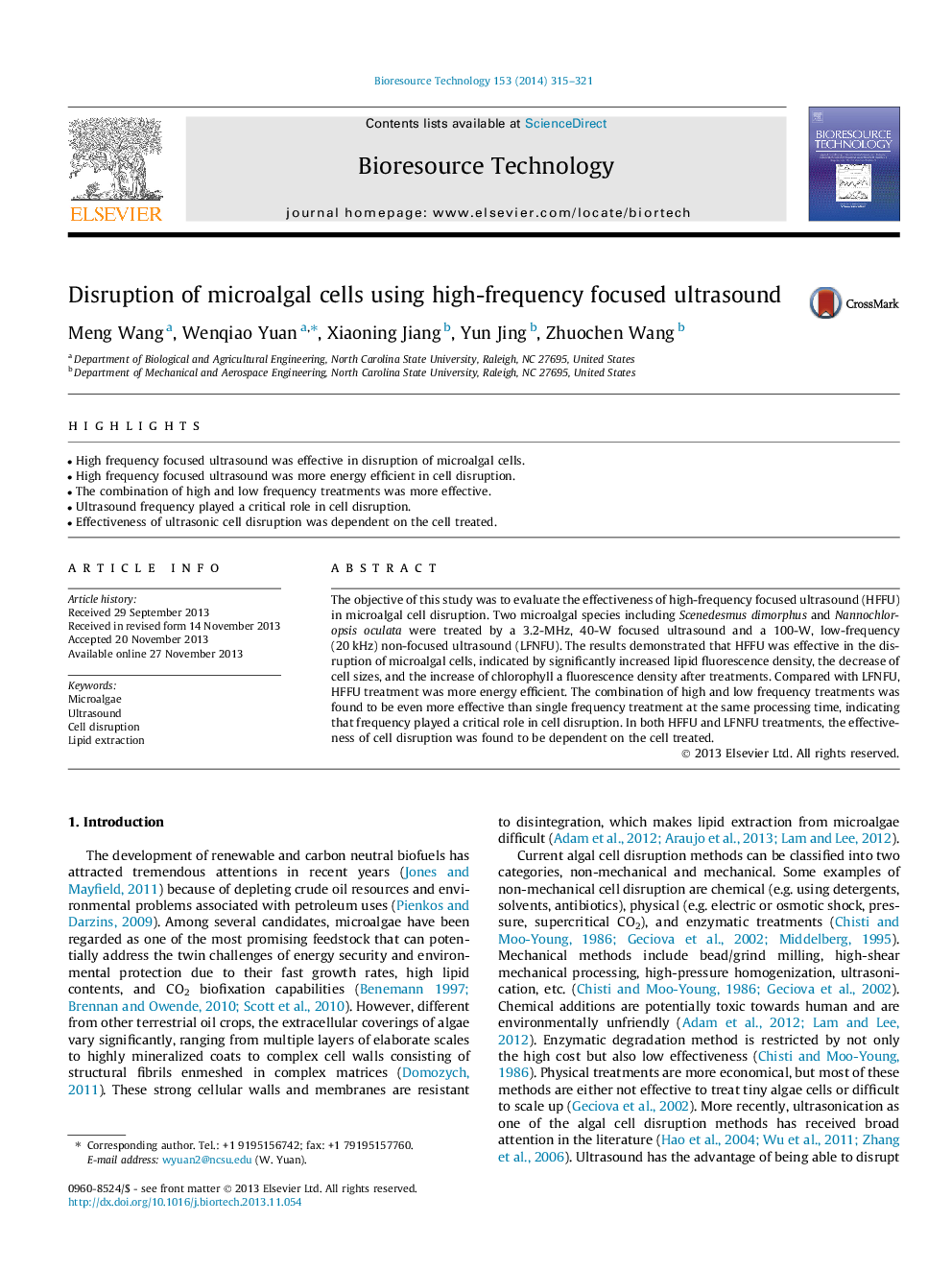| Article ID | Journal | Published Year | Pages | File Type |
|---|---|---|---|---|
| 680753 | Bioresource Technology | 2014 | 7 Pages |
Abstract
The objective of this study was to evaluate the effectiveness of high-frequency focused ultrasound (HFFU) in microalgal cell disruption. Two microalgal species including Scenedesmus dimorphus and Nannochloropsis oculata were treated by a 3.2-MHz, 40-W focused ultrasound and a 100-W, low-frequency (20Â kHz) non-focused ultrasound (LFNFU). The results demonstrated that HFFU was effective in the disruption of microalgal cells, indicated by significantly increased lipid fluorescence density, the decrease of cell sizes, and the increase of chlorophyll a fluorescence density after treatments. Compared with LFNFU, HFFU treatment was more energy efficient. The combination of high and low frequency treatments was found to be even more effective than single frequency treatment at the same processing time, indicating that frequency played a critical role in cell disruption. In both HFFU and LFNFU treatments, the effectiveness of cell disruption was found to be dependent on the cell treated.
Related Topics
Physical Sciences and Engineering
Chemical Engineering
Process Chemistry and Technology
Authors
Meng Wang, Wenqiao Yuan, Xiaoning Jiang, Yun Jing, Zhuochen Wang,
